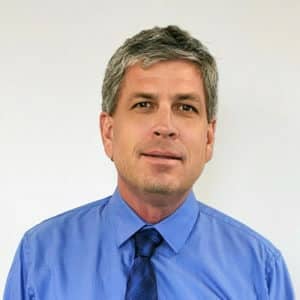
Undergraduate
St Joseph’s University – Philadelphia, Pennsylvania
Bachelor of the Arts – 1985 – 1989
Medical School
University of New England – College of Osteopathic Medicine
Doctor of Osteopathy – 1990 – 1994
Internship and Residency
Mount Clemens General Hospital – Michigan State University
Internship – 1994 – 1995
Orthopedic Residency – 1995 – 2000
Fellowship
Tom Winters, MD – Orthopedics and Sports Medicine 2000 – 2001
Practice Experience
Mid Florida Ortho Daytona, LLC & Mid Florida Neuro Daytona, LLC – Current
Florida Surgery Consultants – Previous
Pasco Orthopedics and Sports Medicine 2006 – 2013
Tom Winters, MD – Orthopedics and Sports Medicine 2003 – 2006
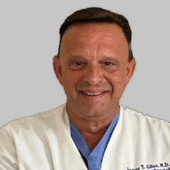
Medical School:
University of Ioannina, Ioannina, Greece
Doctor of Medicine 1981 – 1989
Internship & Residency:
New York Medical College, Valhalla, New York, July 1990 – 1994
Specialties:
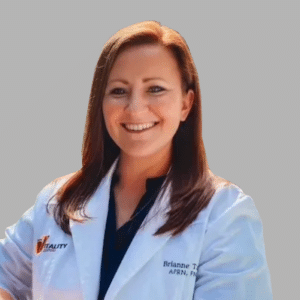
Clinical Expertise:
Clinical Background:
15 years nursing experience in pediatrics, community health, primary care, and nursing education.
Education:
Simmons University FNP Program
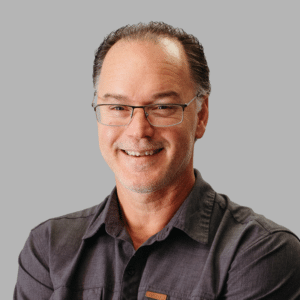
Clinical Expertise:
Personal Injury, AMA Impairment, MRI Interpretation,
AOMSI assessment, TBI assessment, Disc Decompression, Accurately
Correct diagnosis, Prognosis, Treatment Plan.
Clinic Background:
Accurate diagnosis, Prognosis, Treatment plan, Personal
Injury Case Management, Specialist Referrals, Narrative reports.
Academic Background:
Certified MRI Spine interpretation, Certified Spinal
biomechanics, BS-Biology, BA-Interdisciplinary science
• USF Tampa 1996 doctor of chiropractic
• Southern California university of health science – 2002
Medical Director, Clinical Leadership, Practice Management, Peer and Clinical Reviews, Evidence Based Treatment, Public Speaking (10+ years)
Chiropractic
Licenses in FL #CH 12081 active no actions taken.
Certified Medical Examiner FMCSA
July 2019 to July 2025
Certified to perform DOT exams.
Module #1: Personal Injury 101
Triaging and reporting while maintaining ethical medical-legal relationships
Neurodiagnostics, Imaging Protocols and Pathology of the Trauma Patient, an in-depth understanding of the protocols in triaging and reporting the clinical findings of the trauma patient. Maintaining ethical relationships with the medical-legal community. Cleveland University – Kansas City, Academy of Chiropractic Post-Doctoral Division, Long Island, NY, 2022
Module #2: Physical Examination & Documentation for the Trauma Patient
Diagnostics, Risk Factors, Clinical Presentation and Triaging the Trauma Patient, an extensive understanding of the injured with clinically coordinating the history, physical findings and when to integrate neurodiagnostics. An understanding on how to utilize emergency room records in creating an accurate diagnosis and the significance of “risk factors” in spinal injury. Cleveland University – Kansas City, Academy of Chiropractic Post-Doctoral Division, Long Island, NY, 2022
Module #3: Crash Dynamics and Its Relationship to Causality
Crash Dynamics and Its Relationship to Causality, an extensive understanding of the physics involved in the transference of energy from the bullet car to the target car. This includes G’s of force, newtons, gravity, energy, skid marks, crumple zones, spring factors, event data recorder and the graphing of the movement of the vehicle before, during and after the crash. Determining the clinical correlation of forces and bodily injury. Cleveland University – Kansas City, Academy of Chiropractic Post-Doctoral Division, Long Island, NY, 2022
Module #4: MRI, Bone Scan and X-Ray Protocols, Physiology and Indications for the Trauma Patient
MRI, Bone Scan and X-Ray Protocols, Physiology and Indications for the Trauma Patient, MRI interpretation, physiology, history and clinical indications, bone scan interpretation, physiology and clinical indications, x-ray clinical indications for the trauma patient. Cleveland University – Kansas City, Academy of Chiropractic Post-Doctoral Division, Long Island, NY, 2022
Module #5: Neurodiagnostics Testing: EMG/NCV, VEP, BAER, V-ENG and SSEP, Clinical Indications and Interpretation
Neurodiagnostic Testing Protocols, Physiology and Indications for the Trauma Patient, Electromyography (EMG), Nerve Conduction Velocity (NCV), Somato Sensory Evoked Potential (SSEP), Visual Evoked Potential (VEP), Brain Stem Auditory Evoked Potential (BAER) and Visual-Electronystagmography (V-ENG) interpretation, protocols and clinical indications for the trauma patient. Cleveland University – Kansas City, Academy of Chiropractic Post-Doctoral Division, Long Island, NY, 2022
Module #6: Documentation and Working within Your State Laws to Ensure Compliant Paperwork and Reimbursement
Documentation and Reporting for the Trauma Victim, Understanding the necessity for accurate documentation and diagnosis utilizing the ICD-9 and the CPT to accurately describe the injury through diagnosis. Understanding and utilizing state regulations on reimbursement issues pertaining to healthcare. Cleveland University – Kansas City, Academy of Chiropractic Post-Doctoral Division, Long Island, NY, 2022
Module #7: Strategic Plan
Documenting Clinically Correlated Bodily Injury to Causality, Understanding the necessity for accurate documentation, diagnosis and clinical correlation to the injury when reporting injuries in the medical-legal community. Documenting the kinesiopathology, myopathology, neuropathology, and pathophysiology in both a functional and structural paradigm. Cleveland University – Kansas City, Academy of Chiropractic Post-Doctoral Division, Long Island, NY, 2022
Module #1: MRI History and Physics
MRI History and Physics, Magnetic fields, T1 and T2 relaxations, nuclear spins, phase encoding, spin echo, T1 and T2 contrast, magnetic properties of metals and the historical perspective of the creation of NMR and MRI. PACE Approved for The Federation of Chiropractic Licensing Boards, ACCME Joint Providership with the State University of New York at Buffalo Jacobs School of Medicine and Biomedical Sciences, Academy of Chiropractic Post-Doctoral Division, Buffalo, NY, 2022
Module #2: MRI Spinal Anatomy and Protocols
MRI Spinal Anatomy and Protocols, Normal anatomy of axial and sagittal views utilizing T1, T2, 3D gradient and STIR sequences of imaging. Standardized and desired protocols in views and sequencing of MRI examination to create an accurate diagnosis in MRI. PACE Approved for The Federation of Chiropractic Licensing Boards, ACCME Joint Providership with the State University of New York at Buffalo Jacobs School of Medicine and Biomedical Sciences, Academy of Chiropractic Post-Doctoral Division, Buffalo, NY, 2022
Module #3: MRI Disc Pathology and Spinal Stenosis
MRI Disc Pathology and Spinal Stenosis, MRI interpretation of bulged, herniated, protruded, extruded, sequestered and fragmented disc pathologies in etiology and neurological sequelae in relationship to the spinal cord and spinal nerve roots. PACE Approved for The Federation of Chiropractic Licensing Boards, ACCME Joint Providership with the State University of New York at Buffalo Jacobs School of Medicine and Biomedical Sciences, Academy of Chiropractic Post-Doctoral Division, Buffalo, NY, 2022
Module #4: MRI Spinal Pathology
MRI Spinal Pathology, MRI interpretation of bone, intradural, extradural, cord and neural sleeve lesions. Tuberculosis, drop lesions, metastasis, ependymoma, schwannoma and numerous other spinal related tumors and lesions. PACE Approved for The Federation of Chiropractic Licensing Boards, ACCME Joint Providership with the State University of New York at Buffalo Jacobs School of Medicine and Biomedical Sciences, Academy of Chiropractic Post-Doctoral Division, Buffalo, NY, 2022
Module #5: MRI Methodology of Analysis
MRI Methodology of Analysis, MRI interpretation sequencing of the cervical, thoracic and lumbar spine inclusive of T1, T2, STIR and 3D gradient studies to ensure the accurate diagnosis of the region visualized. PACE Approved for The Federation of Chiropractic Licensing Boards, ACCME Joint Providership with the State University of New York at Buffalo Jacobs School of Medicine and Biomedical Sciences, Academy of Chiropractic Post-Doctoral Division, Buffalo, NY, 2022
Module #6: MRI Clinical Application
MRI Clinical Application, The clinical application of the results of space occupying lesions. Disc and tumor pathologies and the clinical indications of manual and adjustive therapies in the patient with spinal nerve root and spinal cord insult as sequelae. PACE Approved for The Federation of Chiropractic Licensing Boards, ACCME Joint Providership with the State University of New York at Buffalo Jacobs School of Medicine and Biomedical Sciences, Academy of Chiropractic Post-Doctoral Division, Buffalo, NY, 2022
Module #1: MRI Disc Overview & Imaging Protocols
MRI Protocols Clinical Necessity, MRI slices, views, T1, T2, STIR axial, stacking, FFE, FSE and sagittal images. Clinical indication for the utilization of MRI and pathologies of disc in both trauma and non-trauma sequellae, including bulge, herniation, protrusion, extrusion and sequestration. PACE Approved for The Federation of Chiropractic Licensing Boards, ACCME Joint Providership with the State University of New York at Buffalo Jacobs School of Medicine and Biomedical Sciences, Academy of Chiropractic Post-Doctoral Division, Buffalo, NY, 2022
Module #2: MRI Interpretation of Lumbar Bulges/Degenerative Disc Disease
MRI Interpretation of Lumbar Degeneration/Bulges, MRI slices, views, T1, T2, STIR axial, stacking, FFE, FSE and sagittal images in the interpretation of lumbar degeneration. With the co-morbidities and complications of stenosis, pseudo-protrusions, cantilevered vertebrate, Schmorl’s nodes and herniations. Central canal and cauda equina compromise interpretation with management. PACE Approved for The Federation of Chiropractic Licensing Boards, ACCME Joint Providership with the State University of New York at Buffalo Jacobs School of Medicine and Biomedical Sciences, Academy of Chiropractic Post-Doctoral Division, Buffalo, NY, 2022
Module #3: MRI Interpretation of Lumbar Herniated Discs
MRI Interpretation of Lumbar Herniations, MRI slices, views, T1, T2, STIR axial, stacking, FFE, FSE and sagittal images in the interpretation of lumbar herniations. With the co-morbities and complications of stenosis, pseudo-protrusions, cantilevered vertebrate, Schmorl/’s nodes and herniations. Morphology of lumbar disc pathologies of central and lateral herniations, protrusions, extrusions, sequestration, focal and broad based herniations are defined and illustrated. Central canal and cauda equina compromise interpretation with management. PACE Approved for The Federation of Chiropractic Licensing Boards, ACCME Joint Providership with the State University of New York at Buffalo Jacobs School of Medicine and Biomedical Sciences, Academy of Chiropractic Post-Doctoral Division, Buffalo, NY, 2022
Module #4: MRI Interpretation of Cervical Bulges/Degenerative Disc Disease
MRI Interpretation of Cervical Degeneration/Bulges, MRI slices, views, T1, T2, STIR axial, stacking, FFE, FSE and sagittal images in the interpretation of cervical degeneration. With the co-morbidities and complications of stenosis, pseudo-protrusions, cantilevered vertebrate, Schmorl/’s nodes and herniations. Spinal cord and canal compromise interpretation with management. PACE Approved for The Federation of Chiropractic Licensing Boards, ACCME Joint Providership with the State University of New York at Buffalo Jacobs School of Medicine and Biomedical Sciences, Academy of Chiropractic Post-Doctoral Division, Buffalo, NY, 2022
Module #5: MRI Interpretation of Cervical Herniated Discs
MRI Interpretation of Cervical Herniations, MRI slices, views, T1, T2, STIR Axial, FFE, FSE and sagittal images in the interpretation of lumbar herniations. With the co-morbidities and complications of stenosis, pseudo-protrusions, cantilevered vertebrate, Schmorl/’s nodes and herniations. morphology of lumbar disc pathologies of central and lateral herniations, protrusions, extrusions, sequestration, focal and broad based herniations are defined and illustrated. Spinal cord and canal compromise interpretation with management. PACE Approved for The Federation of Chiropractic Licensing Boards, ACCME Joint Providership with the State University of New York at Buffalo Jacobs School of Medicine and Biomedical Sciences, Academy of Chiropractic Post-Doctoral Division, Buffalo, NY, 2022
Module #6: Virtual Grand Rounds
MRI Interpretation of Degenerative Spine and Disc Disease with Overlapping Traumatic Insult to Both Spine and Disc, MRI slices, views, T1, T2, STIR Axial, FFE, FSE and sagittal images in the interpretation of degenerative spondylolisthesis, spinal canal stenosis, Modic type 3 changes, central herniations, extrusions, compressions, nerve root compressions, advanced spurring and thecal sac involvement from an orthopedic, emergency room, chiropractic, neurological, neurosurgical, physical medicine perspective. PACE Approved for The Federation of Chiropractic Licensing Boards, ACCME Joint Providership with the State University of New York at Buffalo Jacobs School of Medicine and Biomedical Sciences, Academy of Chiropractic Post-Doctoral Division, Buffalo, NY, 2022
Spinal Biomechanical Engineering: Cartesian System, The Cartesian Coordinate System from the history to the application in the human body. Explanation of the x, y and z axes in both translation and rotations (thetas) and how they are applicable to human biomechanics. ACCME Joint Providership with the State University of New York at Buffalo Jacobs School of Medicine and Biomedical Sciences, Academy of Chiropractic Post-Doctoral Division, Buffalo, NY, 2022
Spinal Biomechanical Engineering: Cervical Pathobiomechanics, Spinal biomechanical engineering of the cervical and upper thoracic spine. This includes the normal and pathobiomechanical movement of both the anterior and posterior motor units and normal function and relationship of the intrinsic musculature to those motor units. Nomenclature in reporting normal and pathobiomechanical findings of the spine. ACCME Joint Providership with the State University of New York at Buffalo Jacobs School of Medicine and Biomedical Sciences, Academy of Chiropractic Post-Doctoral Division, Buffalo, NY, 2022
Spinal Biomechanical Engineering: Lumbar Pathobiomechanics, Spinal biomechanical engineering of the lumbar spine. This includes the normal and pathobiomechanical movement of both the anterior and posterior motor units and normal function and relationship of the intrinsic musculature to those motor units. Nomenclature in reporting normal and pathobiomechanical findings of the spine. ACCME Joint Providership with the State University of New York at Buffalo Jacobs School of Medicine and Biomedical Sciences, Academy of Chiropractic Post-Doctoral Division, Buffalo, NY, 2022
Spinal Biomechanics in Trauma, to utilize whiplash associated disorders in various vectors of impact and whiplash mechanisms in determining pathobiomechanics. To clinically correlate annular tears, disc herniations, fractures, ligament pathology and spinal segmental instability as sequellae to pathobiomechanics from trauma. The utilization of digital motion x-ray in diagnosing normal versus abnormal facet motion along with case studies to understand the clinical application. ACCME Joint Providership with the State University of New York at Buffalo Jacobs School of Medicine and Biomedical Sciences, Academy of Chiropractic Post-Doctoral Division, Buffalo, NY, 2022
Spinal Biomechanical Engineering & Organizational Analysis, Integrating spinal biomechanics and pathobiomechanics through digitized analysis. The comparison of organized versus disorganized compensation with regional and global compensation. Correlation of the vestibular, ocular and proprioceptive neurological integration in the righting reflex as evidenced in imaging. Digital and numerical algorithm in analyzing a spine. ACCME Joint Providership with the State University of New York at Buffalo Jacobs School of Medicine and Biomedical Sciences, Academy of Chiropractic Post-Doctoral Division, Buffalo, NY, 2022
Spinal Biomechanical Engineering: Cervical Digital Analysis, Digitizing and analyzing the cervical spine in neutral, flexion and extension views to diagnose pathobiomechanics. This includes alteration of motion segment integrity (AMOSI) in both angular and translational movement. Ligament instability/failure/pathology are identified all using numerical values and models. Review of case studies to analyze pathobiomechanics using a computerized/numerical algorithm. ACCME Joint Providership with the State University of New York at Buffalo Jacobs School of Medicine and Biomedical Sciences, Academy of Chiropractic Post-Doctoral Division, Buffalo, NY, 2022
Spinal Biomechanical Engineering: Lumbar Digital Analysis, Digitalizing and analyzing the lumbar spine images to diagnose pathobiomechanics. This includes anterior and posterior vertebral body elements in rotational analysis with neutral, left and right lateral bending in conjunction with gate analysis. Ligament instability/failure/pathology is identified all using numerical values and models. Review of case studies for analysis of pathobiomechanics using a computerized/numerical algorithm along with corrective guidelines. ACCME Joint Providership with the State University of New York at Buffalo Jacobs School of Medicine and Biomedical Sciences, Academy of Chiropractic Post-Doctoral Division, Buffalo, NY, 2022
Spinal Biomechanical Engineering: Full Spine Digital Analysis, Digitalizing and analyzing the full spine images to diagnose pathobiomechanics as sequellae to trauma in relation to ligamentous failure and disc and vertebral pathology as sequellae. This includes anterior and posterior vertebral body elements in rotational analysis with neutral, left and right lateral bending in conjunction with gate analysis. Ligament instability/failure/pathology is identified all using numerical values and models. Review of case studies for analysis of pathobiomechanics using a computerized/numerical algorithm along with corrective guidelines. ACCME Joint Providership with the State University of New York at Buffalo Jacobs School of Medicine and Biomedical Sciences, Academy of Chiropractic Post-Doctoral Division, Buffalo, NY, 2022
Spinal Trauma Pathology, Triage and Connective Tissue Injuries and Wound Repair, Triaging the injured and differentially diagnosing both the primary and secondary complaints. Connective tissue injuries and wound repair morphology focusing on the aberrant tissue replacement and permanency prognosis potential. ACCME Joint Providership with the State University of New York at Buffalo Jacobs School of Medicine and Biomedical Sciences, Academy of Chiropractic Post-Doctoral Division, Buffalo, NY, 2023
Spinal Trauma Pathology, Ligament Anatomy and Injury Research and Spinal Kinematics, Spinal ligamentous anatomy and research focusing on wound repair, future negative sequelae of abnormal tissue replacement and the resultant aberrant kinematics and spinal biomechanics of the spine. ACCME Joint Providership with the State University of New York at Buffalo Jacobs School of Medicine and Biomedical Sciences, Academy of Chiropractic Post-Doctoral Division, Buffalo, NY, 2023
Spinal Trauma Pathology, Spinal Biomechanics, Central Nervous System and Spinal Disc Nomenclature, the application of spinal biomechanical engineering models in trauma and the negative sequelae it has on the central nervous system inclusive of the lateral horn, periaqueductal grey matter, thalamus and cortices involvement. ACCME Joint Providership with the State University of New York at Buffalo Jacobs School of Medicine and Biomedical Sciences, Academy of Chiropractic Post-Doctoral Division, Buffalo, NY, 2023
Spinal Trauma Pathology, Biomechanics of Traumatic Disc Bulge and Age Dating Herniated Disc Pathology, The biomechanics of traumatic disc bulges as sequelae from trauma and the comorbidity of ligamentous pathology. Age-dating spinal disc pathology in accordance with Wolff’s Law. ACCME Joint Providership with the State University of New York at Buffalo Jacobs School of Medicine and Biomedical Sciences, Academy of Chiropractic Post-Doctoral Division, Buffalo, NY, 2023
Spinal Trauma Pathology, Clinical Grand Rounds, The review of case histories of mechanical spine pathology and biomechanical failures inclusive of case histories, clinical findings and x-ray and advanced imaging studies. Assessing comorbidities in the triage and prognosis of the injured. ACCME Joint Providership with the State University of New York at Buffalo Jacobs School of Medicine and Biomedical Sciences, Academy of Chiropractic Post-Doctoral Division, Buffalo, NY, 2023
Spinal Trauma Pathology, Research Perspectives, the review of current literature standards in spinal trauma pathology and documentation review of biomechanical failure, ligamentous failure and age-dating disc pathology. ACCME Joint Providership with the State University of New York at Buffalo Jacobs School of Medicine and Biomedical Sciences, Academy of Chiropractic Post-Doctoral Division, Buffalo, NY, 2023
Module #1:
Neurology of Ligament Pathology- Normal Morphology and Tissue Damage, Connective tissue morphology, embryology and wound repair as sequelae to trauma. Full components of strain-sprain models and permanency implications with wound repair and osseous aberration with aberrant structural integrity. Academy of Chiropractic, Post-Doctoral Division, PACE Approved for the Federation of Chiropractic Licensing Board, College of Chiropractic, Long Island, NY, 2023
Module #2:
Neurology of Ligament Pathology- Spinal Biomechanics and Disc Pathology, Disc pathology as sequela to trauma; herniation, extrusion, protrusion, sequestration and how the spinal unit as one system creates homeostasis to balance the pathology. Academy of Chiropractic, Post-Doctoral Division, PACE Approved for the Federation of Chiropractic Licensing Board, College of Chiropractic, Long Island, NY, 2023
Module #3:
Neurology of Ligament Pathology- Neurological Innervation, the peripheral and central innervation of the disc and spinal ligaments of the dorsal root ganglion, spinal thalamic tracts, periaqueductal gray areas innervating the Thalamus and multiple regions of the brain. The efferent neurological distribution to disparate areas of the spine to create homeostasis until tetanus ensues creating osseous changes under the effect of Wolff’s Law. Academy of Chiropractic, Post-Doctoral Division, PACE Approved for the Federation of Chiropractic Licensing Board, College of Chiropractic, Long Island, NY, 2023
Module 1: Terms, Concepts & Definitions
Accident Reconstruction: Terms, Concepts and Definitions, the forces in physics that prevail in accidents to cause bodily injury. Quantifying the force coefficients of vehicle mass and force vectors that can be translated to the occupant and subsequently cause serious injury. Cleveland University – Kansas City, Academy of Chiropractic Post-Doctoral Division, Long Island, NY, 202
Module 2: Causality, Bodily Injury, Crumple Zones, Force & Critical Documentation
Accident Reconstruction: Causality, Bodily Injury, Negative Acceleration Forces, Crumple Zones and Critical Documentation, Factors that cause negative acceleration to zero and the subsequent forces created for the vehicle that get translated to the occupant. Understanding critical documentation of hospitals, ambulance reports, doctors and the legal profession in reconstructing an accident. Cleveland University – Kansas City, Academy of Chiropractic Post-Doctoral Division, Long Island, NY, 2023
Module 3: Skid Marks, Time, Distance, Velocity & Speed Formulas
Accident Reconstruction: Skid Marks, Time, Distance, Velocity, Speed Formulas and Road Surfaces, the mathematical calculations necessary utilizing time, distance, speed, coefficients of friction and acceleration in reconstructing an accident. The application of the critical documentation acquired from an accident site. Cleveland University – Kansas City, Academy of Chiropractic Post-Doctoral Division, Long Island, NY, 2023
Module 4: Research, Causality & Bodily Injury
Accident Reconstruction: Research, Causality and Bodily Injury, Delta V issues correlated to injury and mortality, side impact crashes and severity of injuries, event data recorder reports correlated to injury, frontal impact kinematics, crash injury metrics with many variables and inquiries related to head restraints. Cleveland University – Kansas City, Academy of Chiropractic Post-Doctoral Division, Long Island, NY, 2023
Impairment Rating, The understanding and utilization of the protocols and parameters of the AMA Guide to the Evaluation of Permanent Impairment 6th Edition. Spine, neurological sequelae, migraine, sexual dysfunction, sleep and arousal disorders, station and gait disorders and consciousness are detailed for impairment rating. Herniated discs, radiculopathy, fracture, dislocation and functional loss are also detailed in relation to impairment ratings. Cleveland University – Kansas City, ACCME Joint Providership with the State University of New York at Buffalo Jacobs School of Medicine and Biomedical Sciences, Academy of Chiropractic Post-Doctoral Division, Buffalo, NY, 2018
Module 1: The Basics of Orthopedic Testing
Orthopedic Testing: Principles, Clinical Application and Triage, Integration of orthopedic testing in the clinical setting to develop a differential diagnosis. Utilizing radiographic and advanced imaging inclusive of MRI and CAT scan findings to verify tissue pathology suspected by orthopedic testing conclusions and developing a treatment plan as sequelae. Cleveland University Kansas City, ACCME Joint Providership with the State University of New York at Buffalo Jacobs School of Medicine and Biomedical Sciences, Academy of Chiropractic Post-Doctoral Division, Buffalo, NY, 2023
Module 2: Cervical Spine Orthopedic Testing
Orthopedic Testing: Cervical Spine, Integration of cervical orthopedic testing in the clinical setting to develop a differential diagnosis. Utilizing radiographic and advanced imaging inclusive of MRI and CAT scan findings to verify tissue pathology suspected by orthopedic testing conclusions and developing a treatment plan as sequelae. Cleveland University Kansas City, ACCME Joint Providership with the State University of New York at Buffalo Jacobs School of Medicine and Biomedical Sciences, Academy of Chiropractic Post-Doctoral Division, Buffalo, NY, 2023
Module 3: Cervical Spine Part 2
Orthopedic Testing: Cervical Spine, Integration of cervical orthopedic testing in the clinical setting to develop a differential diagnosis. Utilizing radiographic and advanced imaging inclusive of MRI and CAT scan findings to verify tissue pathology suspected by orthopedic testing conclusions and developing a treatment plan as sequelae. Cleveland University Kansas City, ACCME Joint Providership with the State University of New York at Buffalo Jacobs School of Medicine and Biomedical Sciences, Academy of Chiropractic Post-Doctoral Division, Buffalo, NY, 2023
Module 4: Lumbar Spine
Orthopedic Testing: Lumbar Spine, Integration of lumbar orthopedic testing in the clinical setting to develop a differential diagnosis. Utilizing radiographic and advanced imaging inclusive of MRI and CAT scan findings to verify tissue pathology suspected by orthopedic testing conclusions and developing a treatment plan as sequelae. Cleveland University Kansas City, ACCME Joint Providership with the State University of New York at Buffalo Jacobs School of Medicine and Biomedical Sciences, Academy of Chiropractic Post-Doctoral Division, Buffalo, NY, 2023
Module 5: Clinical Grand Rounds
Orthopedic Testing: Clinical Grand Rounds, how to integrate orthopedic testing in the clinical setting utilizing both simple and complex patient scenarios. It includes potential stroke, or vertebrobasilar insufficient patients and understanding the nuances in a clinical evaluation with orthopedic testing as a critical part of the evaluation and screening process. How to integrate orthopedic testing in the clinical setting utilizing both simple and complex patient scenarios. It includes potential stroke, or vertebrobasilar insufficient patients and understanding the nuances in a clinical evaluation with orthopedic testing as a critical part of the evaluation and screening process. Cleveland University Kansas City, ACCME Joint Providership with the State University of New York at Buffalo Jacobs School of Medicine and Biomedical Sciences, Academy of Chiropractic Post-Doctoral Division, Buffalo, NY, 2023
Module 1:
Traumatic Brain Injury and Concussion Overview: This section is an in-depth overview of traumatic brain injury in concussion. It discusses that all brain injuries are traumatic and dispels the myth of a “mild traumatic brain injury.” Also, this covers triage protocols and the potential sequela of patients with traumatic brain injuries. Academy of Chiropractic, Post-Doctoral Division, Long Island, NY, DATE
Module 2:
Head Trauma and Traumatic Brain Injury Part 1: This section discusses gross traumatic brain injuries from trauma and significant bleeding with both epidural and subdural hematomas. There are numerous case studies reviewed inclusive of neurosurgical intervention and postsurgical outcomes. Academy of Chiropractic, Post-Doctoral Division, Long Island, NY, DATE
Module 3:
Head Trauma and Traumatic Brain Injury Part 2: This section continues with multiple case studies of gross traumatic brain injuries from trauma requiring neurosurgical intervention and discusses recovery sequela based upon the significance of brain trauma. This module also concludes with concussion protocols in traumatic brain injury short of demonstrable bleeding on advanced imaging. Academy of Chiropractic, Post-Doctoral Division, Long Island, NY, DATE
Module 4:
Concussion and Electroencephalogram Testing: This this section covers concussion etiology and cognitive sequela where gross bleeding has not been identified on advanced imaging. It discusses the significance of electroencephalogram testing in determining brain function and pathology (if present). This module also covers the understanding of waveforms in electroencephalogram testing in both normal and abnormal scenarios. Academy of Chiropractic, Post-Doctoral Division, Long Island, NY, DATE
Module 5:
Concussion and Electroencephalogram Testing Pathological Results: This module covers amplitude, conduction and conduction delays as sequela to traumatic brain injury to diagnose concussion and traumatic brain injury in the absence of gross bleeding and advanced imaging. This section covers electroencephalograms and event-related potentials which measures the brain response that is a direct result of specific sensory or motor events. It is a stereotype electrophysiological response to a stimulus and provides a noninvasive means of evaluating brain function. In this module, multiple case studies are discussed with ensuing triage protocols pending the results. Academy of Chiropractic, Post-Doctoral Division, Long Island, NY, DATE
Module 1:
Electrodiagnostics: Electromyogram/Nerve Conduction Velocity (EMG/NCV), Diagnosis & Interpretation: Anatomy and Physiology of Electrodiagnostics: An in-depth review of basic neuro-anatomy and physiology dermatomes and myotomes to both the upper and lower extremities and the neurophysiology of axons and dendrites along with the myelin and function of saltatory for conduction. The sodium and potassium pump’s function in action potentials. ACCME Joint Providership with the State University of New York at Buffalo Jacobs School of Medicine and Biomedical Sciences, Academy of Chiropractic Post-Doctoral Division, Buffalo, NY, 2023
Module 2:
Electrodiagnostics: Electromyogram/Nerve Conduction Velocity (EMG/NCV), Diagnosis & Interpretation: Nerve Conduction Velocity (NCV) Part 1: Nerve conduction velocity testing, the equipment required and the specifics of motor and sensory testing. This section covers the motor and sensory NCV procedures and interpretation including latency, amplitude (CMAP) physiology and interpretation including the understanding of the various nuances of the wave forms. ACCME Joint Providership with the State University of New York at Buffalo Jacobs School of Medicine and Biomedical Sciences, Academy of Chiropractic Post-Doctoral Division, Buffalo, NY, 2023
Module 3:
Electrodiagnostics: Electromyogram/Nerve Conduction Velocity (EMG/NCV), Diagnosis & Interpretation: Nerve Conduction Velocity (NCV) Part 2: Compound motor action potentials (CMAP) and sensory nerve action potentials (SNAP) testing and interpretation including the analysis and diagnosis of the wave forms. It also covers compressive neuropathies of the median, ulnar and posterior tibial nerves; known as carpal tunnel, cubital tunnel and tarsal tunnel syndromes. This section offers interpretation algorithms to help understand the neurodiagnostic conclusions. ACCME Joint Providership with the State University of New York at Buffalo Jacobs School of Medicine and Biomedical Sciences, Academy of Chiropractic Post-Doctoral Division, Buffalo, NY, 2023
Module 4:
Electrodiagnostics: Electromyogram/Nerve Conduction Velocity (EMG/NCV), Diagnosis & Interpretation: Needle Electromyogram (EMG) Studies: The EMG process, inclusive of how the test is performed and the steps required in planning and electromyographic study. This covers the spontaneous activity of a motor unit action potential, positive sharp waves and fibrillations. The insertional activity (both normal and abnormal), recruitment activity in a broad polyphasic presentation and satellite potentials. This covers the diagnosing of patterns of motor unit abnormalities including neuropathic demyelinated neuropathies along with acute myopathic neuropathies. This section also covers the ruling out of false positive and false negative results. ACCME Joint Providership with the State University of New York at Buffalo Jacobs School of Medicine and Biomedical Sciences, Academy of Chiropractic Post-Doctoral Division, Buffalo, NY, 2023
Module 5:
Electrodiagnostics: Electromyogram/Nerve Conduction Velocity (EMG/NCV), Diagnosis & Interpretation: Overview of EMG and NCV Procedures, Results, Diagnoses and Documentation. The clinical incorporation of electrodiagnostic studies as part of a care plan where neuropathology is suspected. It also covers how to use electrodiagnostics in a collaborative environment between the chiropractor as the primary spine care provider and the surgeon, when clinically indicated. This section covers sample cases and health conclude and accurate treatment plans based upon electro-neurodiagnostic findings when clinically indicated. ACCME Joint Providership with the State University of New York at Buffalo Jacobs School of Medicine and Biomedical Sciences, Academy of Chiropractic Post-Doctoral Division, Buffalo, NY, 2023
Module 1-Stroke Anatomy and Physiology Part 1
Stroke Anatomy and Physiology: Brain Vascular Anatomy, The anatomy and physiology of the brain and how blood perfusion effects brain function. A detailed analysis of the blood supply to the brain and the physiology of ischemia. ACCME Joint Providership with the State University of New York at Buffalo Jacobs School of Medicine and Biomedical Sciences, Academy of Chiropractic Post-Doctoral Division, Buffalo, NY, 2023
Module 2-Stroke Anatomy and Physiology Part 2
Stroke Anatomy and Physiology: Stroke Types and Blood Flow, Various types of stroke identifying ischemia, hypoperfusion, infarct and penumbra zones and emboli. Cardiac etiologies and clinical features as precursor to stroke with associated paradoxical emboli and thrombotic etiologies. Historical and co-morbidities that have etiology instroke inclusive of diabetes, coagulopathy, acquired and hereditary deficiencies. ACCME Joint Providership with the State University of New York at Buffalo Jacobs School of Medicine and Biomedical Sciences, Academy of Chiropractic Post-Doctoral Division, Buffalo, NY, 2023
Module 3-Stroke Principles of Treatment an Overview for the Primary Care Provider
Stroke Principles of Treatment an Overview for the Primary Care Provider, Stroke type and treatments performed by vascular specialists. The goals of treatment with the physiology of the infarct and penumbra zones and the role of immediate triage in the primary care setting. Detailing the complications of stroke and future care in the chiropractic, primary care or manual medicine clinical setting. ACCME Joint Providership with the State University of New York at Buffalo Jacobs School of Medicine and Biomedical Sciences, Academy of Chiropractic Post-Doctoral Division, Buffalo, NY, 2023
Module 4-Clinical Evaluation & Protocols for Identifying Stroke Risk
Clinical Evaluation and Protocols for Identifying Stroke Risk, the neurological history and examination for identifying stroke risks with a focus on supra and infratentorial regions, upper and lower motor lesions, cranial nerve signs, spinal cord pathology, motor and sensory pathology and gait abnormalities. Examining genetic and family histories along with dissection risk factors. Stroke orthopedic testing and clinical guidelines pertaining to triage for the primary care provider. ACCME Joint Providership with the State University of New York at Buffalo Jacobs School of Medicine and Biomedical Sciences, Academy of Chiropractic Post-Doctoral Division, Buffalo, NY, 2023
MRI Spine Interpretation Basics
MRI Spinal Anatomy, Protocols and Disc Pathology, Normal anatomy of axial and sagittal views utilizing T1, T2, gradient and STIR sequences of imaging. Degeneration and annular fissures of discs in both trauma and non-trauma patients and the biochemical properties of joints in age dating pathology. Disc bulges from degenerative and sequela to osseous issues, herniation pathology and protrusion, extrusion, migrated and sequestered variations. Clinical scenarios as sequela to disc and pre-existing pathologies. ACCME Joint Providership with the State University of New York at Buffalo Jacobs School of Medicine and Biomedical Sciences, Academy of Chiropractic Post-Doctoral Division, Buffalo, New York, 2023
MRI Spine Interpretation, Herniated, bulged, extruded, protruded, sequestered and degenerative discs. The morphology of a pathological disc vs. normal morphology and the sequences required including T1, T2 and STIR for all spinal regions. Modic 1-2-3 changes detailed and the traumatic relationship. ACCME Joint Providership with the State University of New York at Buffalo Jacobs School of Medicine and Biomedical Sciences, Academy of Chiropractic Post-Doctoral Division, Buffalo, New York, 2023
Extremity, MRI & X-Ray Interpretation
Module 1
Extremity MRI & X-ray Interpretation of the Shoulder, Identifying normal anatomy on both MRI and x-ray, inclusive of osseous, connective tissue, and neurological structures. Identifying fractures in the adult and pediatric cases. Differentially diagnosing various arthritic etiologies of osseous derangement. ACCME Joint Providership with the State University of New York at Buffalo Jacobs School of Medicine and Biomedical Sciences, Academy of Chiropractic Post-Doctoral Division, Buffalo, NY, 2023
Module 2
Extremity MRI & X-ray Interpretation of the Shoulder, Identifying fractures in the adult and pediatric cases. Differentially diagnosing various arthritic changes vs. benign and metastatic Tumors. ACCME Joint Providership with the State University of New York at Buffalo Jacobs School of Medicine and Biomedical Sciences, Academy of Chiropractic Post-Doctoral Division, Buffalo, NY, 2023
Module 3
Extremity MRI & X-ray Interpretation of the Elbow, identifying normal anatomy on both MRI and x-ray, inclusive of osseous, connective tissue, and neurological structures, identifying fractures in the adult and pediatric cases. Differentially diagnosing various arthritic etiologies of osseous derangement. Differentially diagnosing various arthritic changes vs. benign and metastatic Tumors. ACCME Joint Providership with the State University of New York at Buffalo Jacobs School of Medicine and Biomedical Sciences, Academy of Chiropractic Post-Doctoral Division, Buffalo, NY, 2023
Module 4
Extremity MRI & X-ray Interpretation of the Wrist, identifying normal anatomy on both MRI and x-ray, inclusive of osseous, connective tissue, and neurological structures, identifying fractures in the adult and pediatric cases. Differentially diagnosing various arthritic etiologies of osseous derangement. Differentially diagnosing various arthritic changes vs. benign and metastatic Tumors. ACCME Joint Providership with the State University of New York at Buffalo Jacobs School of Medicine and Biomedical Sciences, Academy of Chiropractic Post-Doctoral Division, Buffalo, NY, 2023
Module 5
Extremity MRI & X-ray Interpretation of the Hand, identifying normal anatomy on both MRI and x-ray, inclusive of osseous, connective tissue, and neurological structures, identifying fractures in the adult and pediatric cases. Differentially diagnosing various arthritic etiologies of osseous derangement. Differentially diagnosing various arthritic changes vs. benign and metastatic Tumors. ACCME Joint Providership with the State University of New York at Buffalo Jacobs School of Medicine and Biomedical Sciences, Academy of Chiropractic Post-Doctoral Division, Buffalo, NY, 2023
Module 6
Extremity MRI & X-ray Interpretation of the Hip, Identifying normal anatomy on both MRI and x-ray, inclusive of osseous, connective tissue, and neurological structures. Identifying fractures in the adult and pediatric cases. Differentially diagnosing various arthritic etiologies of osseous derangement. ACCME Joint Providership with the State University of New York at Buffalo Jacobs School of Medicine and Biomedical Sciences, Academy of Chiropractic Post-Doctoral Division, Buffalo, NY, 2023
Module 7
Extremity MRI & X-ray Interpretation of the Hip, Identifying fractures in the adult and pediatric cases. Differentially diagnosing various arthritic changes vs. benign and metastatic Tumors. ACCME Joint Providership with the State University of New York at Buffalo Jacobs School of Medicine and Biomedical Sciences, Academy of Chiropractic Post-Doctoral Division, Buffalo, NY, 2023
Module 8
Extremity MRI & X-ray Interpretation of the Knee, Identifying normal anatomy on both MRI and x-ray, inclusive of osseous, connective tissue, and neurological structures. Identifying fractures in the adult and pediatric cases. Differentially diagnosing various arthritic etiologies of osseous derangement. ACCME Joint Providership with the State University of New York at Buffalo Jacobs School of Medicine and Biomedical Sciences, Academy of Chiropractic Post-Doctoral Division, Buffalo, NY, 2023
Module 9
Extremity MRI & X-ray Interpretation of the Knee, Identifying fractures in the adult and pediatric cases. Differentially diagnosing various arthritic changes vs. benign and metastatic Tumors. ACCME Joint Providership with the State University of New York at Buffalo Jacobs School of Medicine and Biomedical Sciences, Academy of Chiropractic Post-Doctoral Division, Buffalo, NY, 2023
Module 10
Extremity MRI & X-ray Interpretation of the Hand, identifying normal anatomy on both MRI and x-ray, inclusive of osseous, connective tissue, and neurological structures, identifying fractures in the adult and pediatric cases. Differentially diagnosing various arthritic etiologies of osseous derangement. Differentially diagnosing various arthritic changes vs. benign and metastatic Tumors. ACCME Joint Providership with the State University of New York at Buffalo Jacobs School of Medicine and Biomedical Sciences, Academy of Chiropractic Post-Doctoral Division, Buffalo, NY, 2023
Module 11
Extremity MRI & X-ray Interpretation of the Foot, identifying normal anatomy on both MRI and x-ray, inclusive of osseous, connective tissue, and neurological structures, identifying fractures in the adult and pediatric cases. Differentially diagnosing various arthritic etiologies of osseous derangement. Differentially diagnosing various arthritic changes vs. benign and metastatic Tumors. ACCME Joint Providership with the State University of New York at Buffalo Jacobs School of Medicine and Biomedical Sciences, Academy of Chiropractic Post-Doctoral Division, Buffalo, NY, 2023
MRI Spine Clinical Grand Rounds
MRI Spine Clinical Grand Rounds, Interpretation sequencing of STIR, T1, T2, Axial and Sagittal acquisitions. Landmarks, physics, and literature-based definitions of disc and osseous pathology, Visualizing, diagnosing, and documenting cervical and lumbar anatomy vs. pathology. Academy of Chiropractic Post-Doctoral Division, Accreditation Council for Continued Medical Education in conjunction with The State University of New York at Buffalo, Jacobs School of Medicine and Biomedical Sciences, Cleveland University – Kansas City, Long Island, NY, 2023
MRI Spine Clinical Grand Rounds, Visualizing, diagnosing, and documenting lumbar spine sequencing, disc herniations, neural canals, cauda equina, conus medullaris, nerve sleeves, canal stenosis grading, and vertebral width vs. height in determining segmental remodeling. Diagnosing thecal sac abutment, central canal root compression and ligamentum flava involvement. Academy of Chiropractic Post-Doctoral Division, Accreditation Council for Continued Medical Education in conjunction with The State University of New York at Buffalo, Jacobs School of Medicine and Biomedical Sciences, Cleveland University – Kansas City, Long Island, NY, 2023
MRI Spine Clinical Grand Rounds, Case study visualizing, diagnosing, and documenting cervical spine sequencing, disc herniations, neural canals, cauda equina, conus medullaris, and vertebral width vs. height in determining segmental remodeling. Identifying the Pons, Occipital junction, and spinal cord to identify Chiari 1 malformations. Academy of Chiropractic Post-Doctoral Division, Accreditation Council for Continued Medical Education in conjunction with The State University of New York at Buffalo, Jacobs School of Medicine and Biomedical Sciences, Cleveland University – Kansas City, Long Island, NY, 2023
MRI Spine Clinical Grand Rounds, Visualizing, diagnosing, and documenting lumbar spine sequencing, disc extrusion type herniations, neural canals, cauda equina, conus medullaris, spondylolisthesis, degenerative spondylolisthesis, disc degeneration, neural canal and central root compressions, central canal stenosis. Varices vs. herniations, and multiple level disc pathology with biomechanical failures. Academy of Chiropractic Post-Doctoral Division, Accreditation Council for Continued Medical Education in conjunction with The State University of New York at Buffalo, Jacobs School of Medicine and Biomedical Sciences, Cleveland University – Kansas City, Long Island, NY, 2023
MRI Spine Clinical Grand Rounds, Visualizing, diagnosing, and documenting cervical spine sequencing, disc extrusion type herniations, neural canals, disc degeneration, thecal sac compression, central canal stenosis, cord displacement, reversal of cervical curve, Chiari 1 malformation. Identifying spinal biomechanical failure in MRI sequencing, with visualizing ligamentous pathology as cause for failure. Differentially diagnosing recent vs. older trauma based upon edematous signal in T1, T2, and STIR images. Academy of Chiropractic Post-Doctoral Division, Accreditation Council for Continued Medical Education in conjunction with The State University of New York at Buffalo, Jacobs School of Medicine and Biomedical Sciences, Cleveland University – Kansas City, Long Island, NY, 2023
MRI Spine Clinical Grand Rounds, Visualizing, diagnosing, and documenting cervical spine sequencing, multiple disc extrusion type herniations, vertebral remodeling, intradural tumor displacing the spinal cord visualized in T1, T2, and STIR sequences, neural canal stenosis, disc degeneration, thecal sac compression, central canal stenosis, cord displacement, reversal of cervical curve, Chiari 1 malformation, and identifying of inferior brain structures. Academy of Chiropractic Post-Doctoral Division, Accreditation Council for Continued Medical Education in conjunction with The State University of New York at Buffalo, Jacobs School of Medicine and Biomedical Sciences, Cleveland University – Kansas City, Long Island, NY, 2023
MRI Spine Clinical Grand Rounds, Visualizing, diagnosing, and documenting 1) improper sequence acquisitions invalidating interpretation 2) incomplete study invalidating interpretation 3) visualizing, diagnosing, and documenting lumbar spine sequencing, multiple disc extrusion type herniations, vertebral remodeling, multiple thecal sac compressions, neural canal stenosis, disc osteophyte/ridging complex, central canal stenosis, spondylolisthesis. Identifying the spleen, liver, kidneys, inferior vena cava, and psoas musculature on imaging. Academy of Chiropractic Post-Doctoral Division, Accreditation Council for Continued Medical Education in conjunction with The State University of New York at Buffalo, Jacobs School of Medicine and Biomedical Sciences, Cleveland University – Kansas City, Long Island, NY, 2023
MRI Spine Clinical Grand Rounds, Visualizing, diagnosing, and documenting cervical spine sequencing, cervical spondylosis, pathological spinal biomechanics, reversal of lordotic curve, and vertebral width vs. height in determining segmental remodeling, central herniation, thecal sac compression of the cord, identifying tongue, epiglottis, hyoid cartilage, pharynx, thyroid. Reviewing fat saturation sequences for osseous metastatic tumors and advanced degeneration. Academy of Chiropractic Post-Doctoral Division, Accreditation Council for Continued Medical Education in conjunction with The State University of New York at Buffalo, Jacobs School of Medicine and Biomedical Sciences, Cleveland University – Kansas City, Long Island, NY, 2023
MRI Spine Clinical Grand Rounds, Visualizing, diagnosing, and documenting lumbar spine sequencing, degenerative disc disease, nerve root sleeve abutment, far lateral herniations vs. bulges, normal vs. dissected inferior vena cava aneurism, epidural fat as a space occupying lesion, facet arthropathy and edema, hypertrophy of ligamentum flava, and pseudo disc at the S1-S2 level. Academy of Chiropractic Post-Doctoral Division, Accreditation Council for Continued Medical Education in conjunction with The State University of New York at Buffalo, Jacobs School of Medicine and Biomedical Sciences, Cleveland University – Kansas City, Long Island, NY, 2023
MRI Spine Clinical Grand Rounds, Visualizing, diagnosing, and documenting cervical spine sequencing utilizing T1 weighted images for pathology, inclusive of advanced degeneration and tumor detection. STIR in a fat saturated image for ligamentous pathology inclusive of the posterior longitudinal, ligamentous flava and interspinal ligaments. Normal clivus and odontoid for cerebellar tonsil location. Cerebral spinal fluid (CSF) flow and the utilization of the spinal cord’s central canal for CSF transport. Academy of Chiropractic Post-Doctoral Division, Accreditation Council for Continued Medical Education in conjunction with The State University of New York at Buffalo, Jacobs School of Medicine and Biomedical Sciences, Cleveland University – Kansas City, Long Island, NY, 2023
Primary Spine Care 12: Case Management & Documentation Online
2022 Trends in Spinal Healthcare, analyzing evidenced-based spinal healthcare trends in both utilization and necessity and understanding the marketplace. The use of evidenced-based demonstrative documentation in reporting treatment pathways in triaging spinal pathobiomechanics. Academy of Chiropractic Post-Doctoral Division, Long Island, NY, 2021
MRI Spine Clinical Case Grand Rounds, Clinical case review of MRI’s including sagittal, axial, T1, T2, STIR, and proton density sequences. Identified will be the vertebrate, spinal cord, discs, nerve roots, thecal sac, posterior longitudinal ligament, epidural veins, and fat saturation pulses. Pathology will include bulges, herniations, protrusions, extrusions, myelomalacia, cord edema, and Schmorl’s nodes. Learn how to collaborate effectively with radiologists, neuroradiologists, and neurosurgeons on the clinical findings. Academy of Chiropractic Post-Doctoral Division, Long Island, NY, 2021
Chiropractic vs. Physical Therapy vs. Medical Case Management and Outcomes, Analyzing evidence-based outcomes in triaging non-anatomical lesions. The analysis of neuro-biomechanical pathological lesions defines primary spinal lesions and removes the dogma of non-specific back pain. Managing collaborative relationships with medical primary providers and specialists in clinical practice. Academy of Chiropractic Post-Doctoral Division, Long Island, NY, 2021
MSK Extremity Radiological Interpretation, utilizing both MRI and x-ray in identifying via x-ray and advanced imaging extremity instabilities from ligamentous, osseous or neoplastic derangement. Academy of Chiropractic Post-Doctoral Division, Long Island, NY, 2021
Demonstrative Narrative and Evaluation and Management Report Writing, effectively creating demonstrative medical-legal documentation and meeting the needs of the courts, and making your “4-Corner” (narrative) report to build your reputation as an evidence-based provider. The step-by-step minutiae of building a report, accomplishing report writing timely and effectively by understanding the regulatory and administrative rules. Learn how to educate the lawyer on bodily injury through evidence-based demonstrative reporting. Academy of Chiropractic Post-Doctoral Division, Long Island, NY, 2021
Ligament/Connective Tissue Physiology and Pathology, Master-Class in ligaments; anatomy, physiology, vascularization, neurological innervation, tissue repair and how they all relate to clinical practice. Ligament pathology correlating to the mechanisms of patho-neuro-biomechanical lesions (vertebral subluxation complex). Also, how ligaments play a critical role in the chiropractic spinal adjustment and in defining the chiropractic spinal adjustment mechanisms. Academy of Chiropractic Post-Doctoral Division, Long Island, NY, 2021
Stroke Evaluation and Risk Factors in the Chiropractic Practice, Diagnosing, triaging, and documenting headaches, migraines, and vascular incidents (stroke) in the primary provider’s office. Imaging protocols based upon history and clinical presentation will be presented, along with analyzing imaging findings in determining the etiology. There will be an extensive question and answer session following the instructional presentation. Academy of Chiropractic Post-Doctoral Division, Long Island, NY, 2021
Age-Dating Herniated Discs and Trauma, Age dating herniated discs and trauma is a critical skill for an expert in spine. It combines the clinical skills of interpreting X-ray, MRI, and other imaging modalities with a clinician’s understanding of joint pathology. This level of expertise is critical when collaborated with other physicians or working in the medical-legal environment as an expert. Age dating pathology is also central to creating a prognosis on your patient’s recovery and must be evidence-based in rationale. Academy of Chiropractic Post-Doctoral Division, Long Island, NY, 2021
Clinical Grand Rounds in Spinal Biomechanics, Case reviews utilizing E/M, MRI, and x-ray mensuration report to conclude an accurate diagnosis, prognosis, and treatment plan. Common diagnosis requiring inter-professional collaboration with a discussion of diagnostic dilemmas and proper communication methods. Academy of Chiropractic Post-Doctoral Division, Long Island, NY, 2021
Neurosurgical Grand Rounds, A clinical discussion of collaborating with neurosurgeons on spinal cord and spinal nerve root co-morbidities. Triaging cases with herniated, protruded, extruded, fragments discs and differentially diagnosing tethered cord, syringomyelia, traumatic Schmorl’s Nodes, Myelomalcia, spinal cord edema, vacuum disc and other intra, and extra-dural lesions. Academy of Chiropractic Post-Doctoral Division, Long Island, NY, 2021
Electronic Medical Records: Best Practices — Highly Proficient
November 2019
Knowledge of EMR data, associated privacy regulations, and best practices for EMR use. Full results: https://share.indeedassessments.com/share_assignment/wy4zjkpa5pa-ihu0
Conscientiousness — Highly Proficient
November 2019
Tendency to be well-organized, rule-abiding, and hard-working. Full results: https://share.indeedassessments.com/share_to_profile/ faa1ef5833d41e46b23f9cdfdb93890eeed53dc074545cb7
Additional Information
Graduated with honors from Southern California University of Health Sciences. Opened a private practice in Beverly Hills, CA. Started a medical billing company. Clinic Director for million-dollar practice. Proficient in a multidisciplinary setting and a team player.
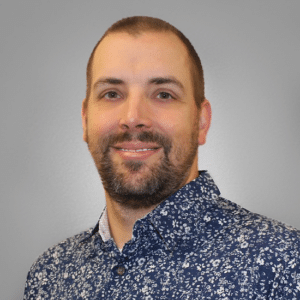
Dr. Justin Spiegel, originally from Western New York, graduated from Houghton College in 2003 with his Bachelor’s in Biology, minoring in Athletic Training and Psychology. He went on to attend graduate school at State University of New York in Buffalo where he completed the Doctor of Physical Therapy program in 2007. After receiving his DPT, he relocated to Tampa and began his career in outpatient therapy. Justin loves spending time with his wife and two children, catching the Rays and Lightning games, and enjoying the Florida weather.
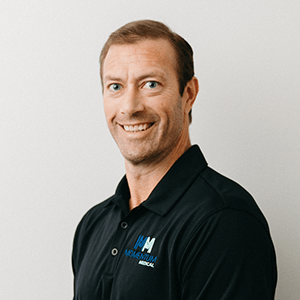
Clinical Expertise:
Graduated from chiropractic school in 2008. Certified in numerous chiropractic
and rehab/therapy techniques.
Clinical Background:
Former team physician for the NHL Florida Panthers and MLS Inter Miami F.C.
Academic Background:
Florida Atlantic University in Boca Raton, FL for undergrad. Major in Biological
Sciences and Minor in Business Management. Palmer Chiropractic College,
Florida Campus
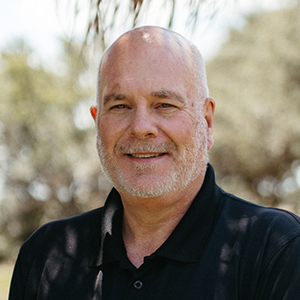
Clinical Expertise:
Spinal Correction
Non surgical spinal decompression
Peripheral Neuropathy
Personal Injury
Listening
Clinical Techniques:
Diversified
Grostic
Thompson
Activator / Arthrostim
Pettibon
No sounds, no twisting adjustments
Academic Background:
Palmer College of Chiropractic

Clinical Expertise:
Personal Injury since 2014.
Accurately Correct diagnosis, Prognosis, Treatment Plan.
Clinical Background:
Clinical Experience in Live Chiro University
Stem Cell Training
Spinal Decompression
Academic Background:
Undergraduate B.S Degree 1981
Virginia Commonwealth University
Stem Cells Sales and Education 2020 – 2021 St. Augustine, Florida.
Trained in Acupuncture early 1990’ Jackson Memorial, Miami, Florida.
N. A. E. T Nambudripod’s Allergy Elimination Technique Orange County,
California (early 1990’s).
Life Chiropractic College – 1981 to 1984 Marietta Georgia

Dr. Joyce Acosta is a board certified Kissimmee chiropractor. Dr. Acosta earned her Bachelors of Science degree in Biology from University of Central Florida. She received her Doctor of Chiropractic from Palmer College of Chiropractic. She studied Acupuncture at the University of Miami. She is committed to helping families in the community experience improved health and vitality. She enjoys educating others on how to manage stress better, how to prevent injury in the workplace and home, and how to return to peak performance after an injury.
The chiropractic techniques she utilizes include: Diversified, Gonstead, Thompson, and Activator, the office also performs physical therapy, manual therapy and rehabilitation. Dr. Acosta welcomes and strives to help patients achieve wellness and health from injuries and illness, including chronic low back pain, headaches, neck and shoulder pain, sport injuries, auto accident injuries, pregnant women and children. Her love of chiropractic and genuine concern for others drive her pursuit of excellence in her work as well as her service to the community. Dr. Acosta routinely attends post-graduate seminars in order to provide the most advanced and best quality care for her patients.
Dr. Acosta enjoys reading and outdoor activities including swimming, fishing, and camping with her family and dogs. She also enjoys traveling and experiencing new cultures. She believes that traveling to new and exciting places changes the way you think and relate to others as an individual.

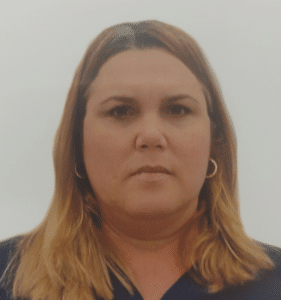
Sarainm Fernandez Vila is an enthusiastic Cuban therapist who graduated in 1993 with a degree in Physical Therapy and Rehabilitation in Havana, Cuba. Since graduating, she has dedicated herself to physical therapy of thousands of patients. Her passion for the profession and the desire to help improve people’s quality of life led her to work in earthquakes in Pakistan in 2005 and Haiti in 2010.
In 2017 she emigrated to the U.S.A. and settled in Tampa where she studied for a degree in Therapeutic Massage. After passing the Board exam, she is working at Momentum Medical with the objective of helping al patients receive as much as possible.
In her free time, she likes to enjoy her family, contemplate nature and visit many places.
Favorite quote: “The valuable things in life never come easy. Where there’s a will there’s a way. Just make an effort and you will achieve your goals.” – Richard Vaughan
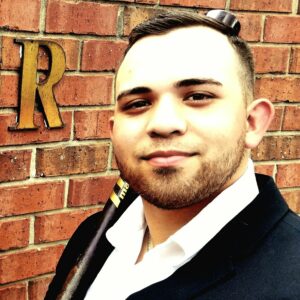
Gabriel Angel Gonzalez has been a licensed massage therapist since 2010 in the state of Florida. He received his education from Florida College of Natural Health. He utilizes sports, myofascial and medical massage techniques to help facilitate the body’s natural healing process. Gabriel enjoys seeing his patients get better with each session.
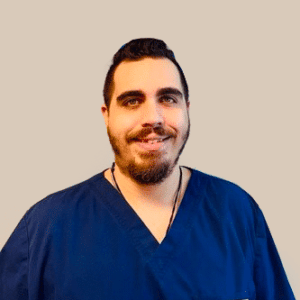
Hello my name is Neil. I am a licensed massage therapist with over 10 years of experience. I love what I do every day in healthcare. I enjoy being an essential part of my patient’s return to activities they love doing. Every patient is a puzzle that I try to solve. On my time off, I enjoy playing guitar, being in the outdoors, spending time with my fiancé and dogs.

Wilmer Montero is a Massage Therapist; a graduate from Everest University in 2015, licensed to practice Massage in the State of Florida. Wilmer is committed to the idea that massage should be part of maintaining a healthy lifestyle. He believes that massage and therapy after a motor vehicle accident is imperative to achieve a beneficial outcome for individuals with pain and Injuries.
Wilmer incorporates different massage techniques with the chiropractors’ treatment plan including all aspects of well being for the patient.
Wilmer is fluent in both Spanish and English. In his spare time, he enjoys being with his grandchildren.and watching Baseball.
His goals as a Massage Therapist, are to continue to educate himself and enhance his knowledge to better assist patients to recuperate from injuries sustained in automobile accidents.
Serving Volusia, Flagler, Orange, Osceola, Hillsborough, Pasco, Pinellas, and Seminole county patients with back pain conditions, sports injury, work injury, headaches, lower back pain, auto accident injuries, neck pain and more.
Our staff can accommodate Spanish, French and Russian speaking patients. All other languages with enough notice we can schedule a translator.
Todas nuestras localizaciones tienen hablantes de español en el personal.
© 2024 Momentum Medical